AIOs are superb, thermal pastes are the same?
Date:
Here's a short post: I think AIOs or All-In-One coolers are the superior cooling solution, both to air coolers and custom liquid cooling loops for the average user!
Recently, I got some new thermal paste, because my CPU temps were still a bit higher than I'd like under full load. While gaming they'd hover around 70 C and under some benchmarks they'd go up to 80 C whereas with Prime95 they'd rise so far that the CPU would thermal throttle to prevent damage. This is on a Ryzen 7 5800X, a series which is known to run a bit hot, but at the same time I wondered whether I could improve things a bit.
I realized that I more or less dreaded the idea of having to take off the CPU cooler and to repaste it and assemble everything again, mostly due to the mounting mechanisms that I've seen a lot of AM4 coolers use - those annoying pressure latches that are hard to secure properly, as well as the fact that good air coolers can be quite bulky and I sometimes just get cut or scraped by the fins on them.
AIOs are very nice, you should get one
But then I remembered that I moved over to having an AIO which leaves it as a really simple errand and the case doesn't even feel all that crowded:
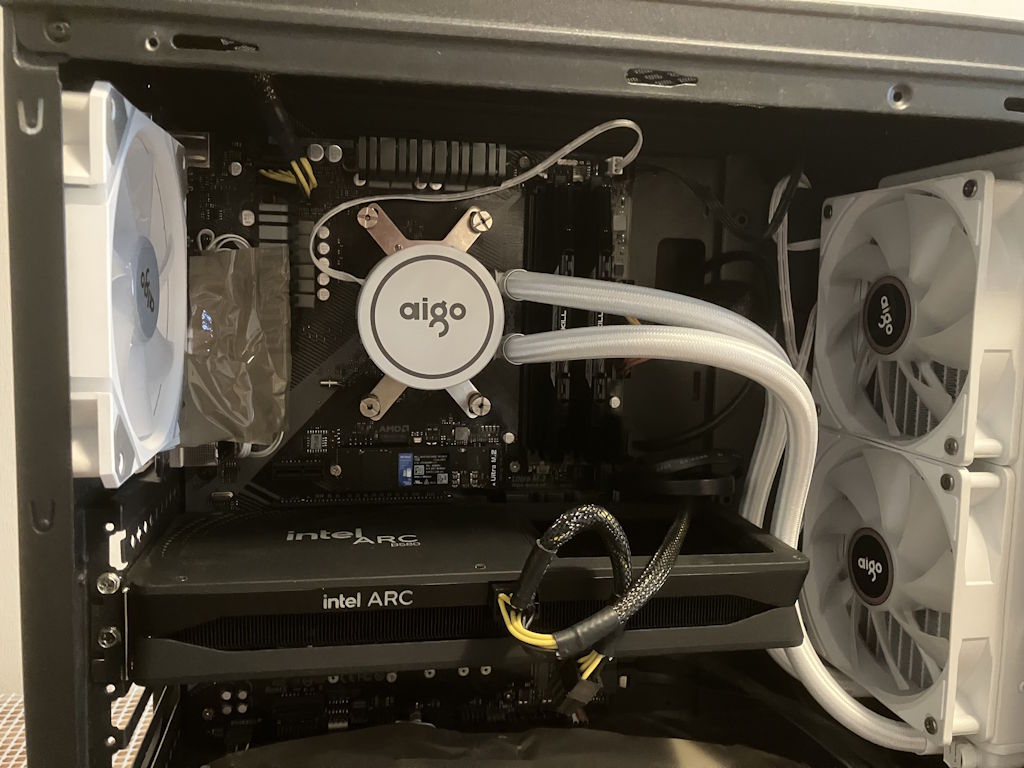
Now, the fact that everything is a bit dusty and that I use tape for managing some cables (don't worry, nothing has melted yet, it might look like a mess but it works) aside, you can see for yourself - there are some screws that I can easily unscrew or rescrew with my hands without getting a screwdriver out. It's about as easy as installing an AIO can get.
I got the Aigo ACSE 240 on AliExpress a while back for about 54 EUR and I have to say that it was money well spent, they also have or at least had some of the more affordable case fans as well! This setup pretty much replaced me needing like 5 case fans and the temps are pretty good, all while there isn't too much noise.
I will admit that I wouldn't recommend them over other brands at the time because it seems like most prices on AliExpress went up a good 40% and I've literally 0 idea why - for that price you can probably find something on local e-commerce stores for cheaper, even from more reputable or at least mainstream brands:
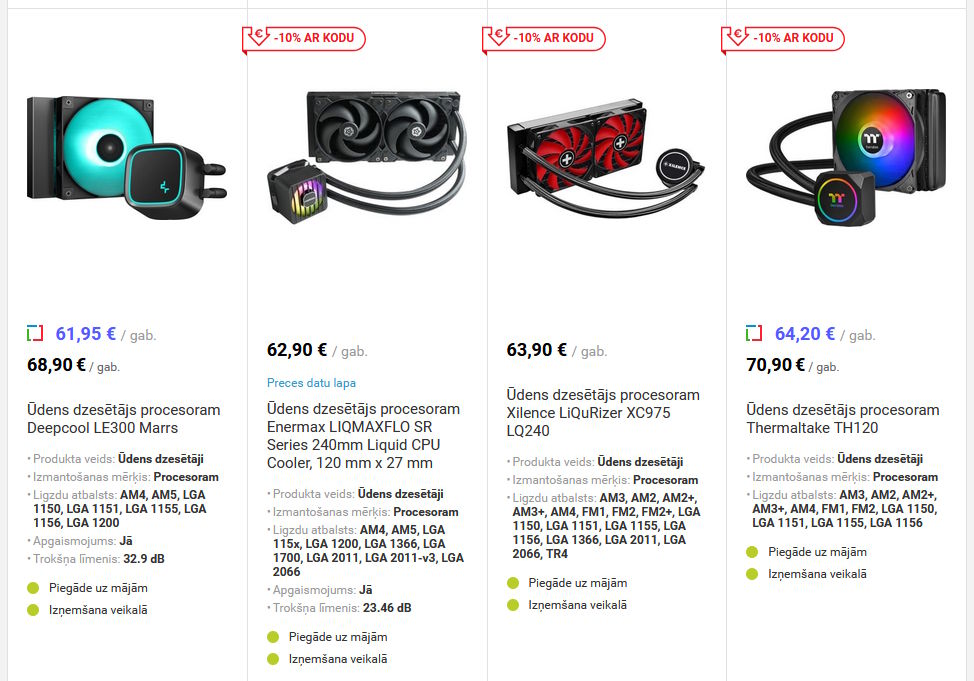
Either way, the argument remains that as long as you go for literally any AIO with good reviews that fits in your case and your budget, you'll probably have a pretty decent time. And yes, although they might need a refill in like 5 years or might need a replacement if and when the pump dies, they are still affordable enough for this not to be a super big problem.
So what's this whole thing about the thermal paste? Well, the temps were still a bit high for my liking, so I figured that I'd get rid of the Gembird paste I had on the cooler up until now. You might gasp in horror at seeing how there's a bit too much paste on the cold plate, but honestly that's mostly a combination of pretty high mounting pressure and it being better to have a bit too much instead of too little, especially given how the cheaper pastes don't really spread out that well:
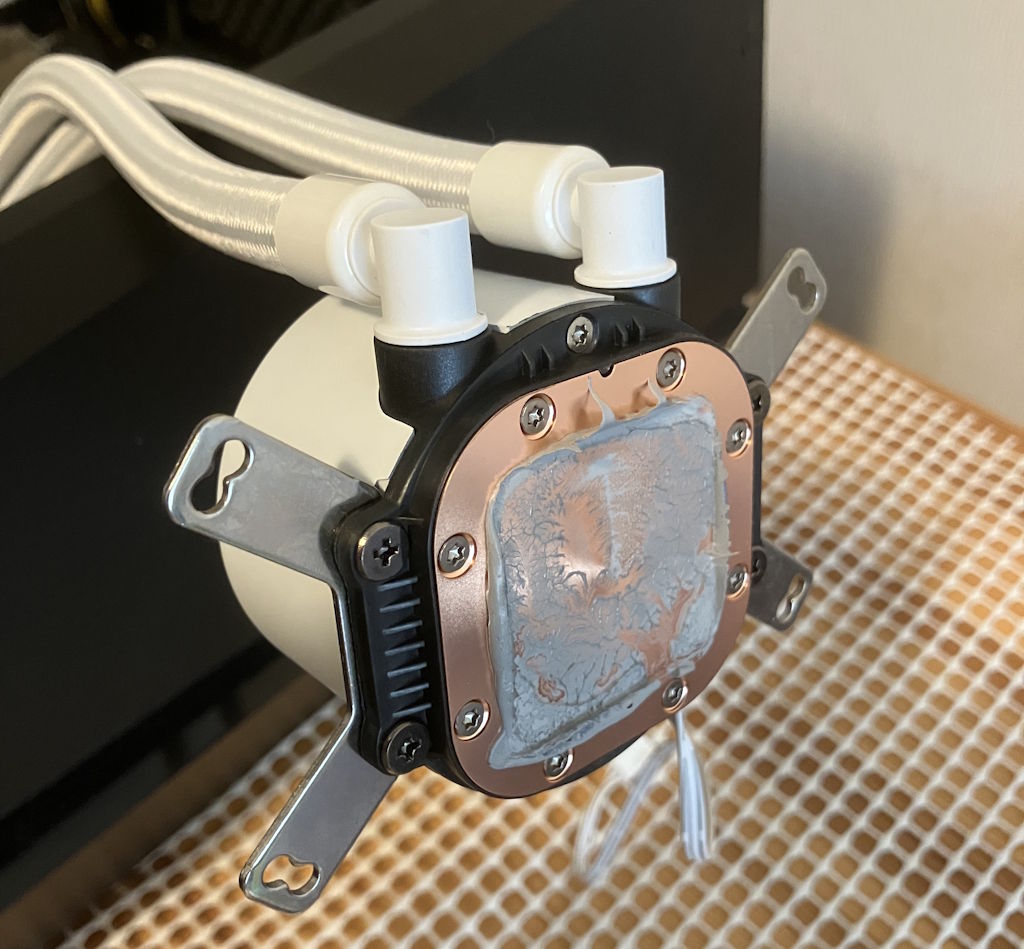
Okay, I admit it - I made a bit of a mess and used too much. But it was easy to clean off, because the radiator and the fans didn't even have to be removed from the case, I just unscrewed the cooler head from the CPU mount and pulled it aside and could wipe it down as much as I needed. That's really, really convenient.
Paste aside, notice how those standoffs are still in place, meaning that I don't have to worry about the backplate falling off or anything, it's not like a big deal or anything, but nice to see common sense engineering:
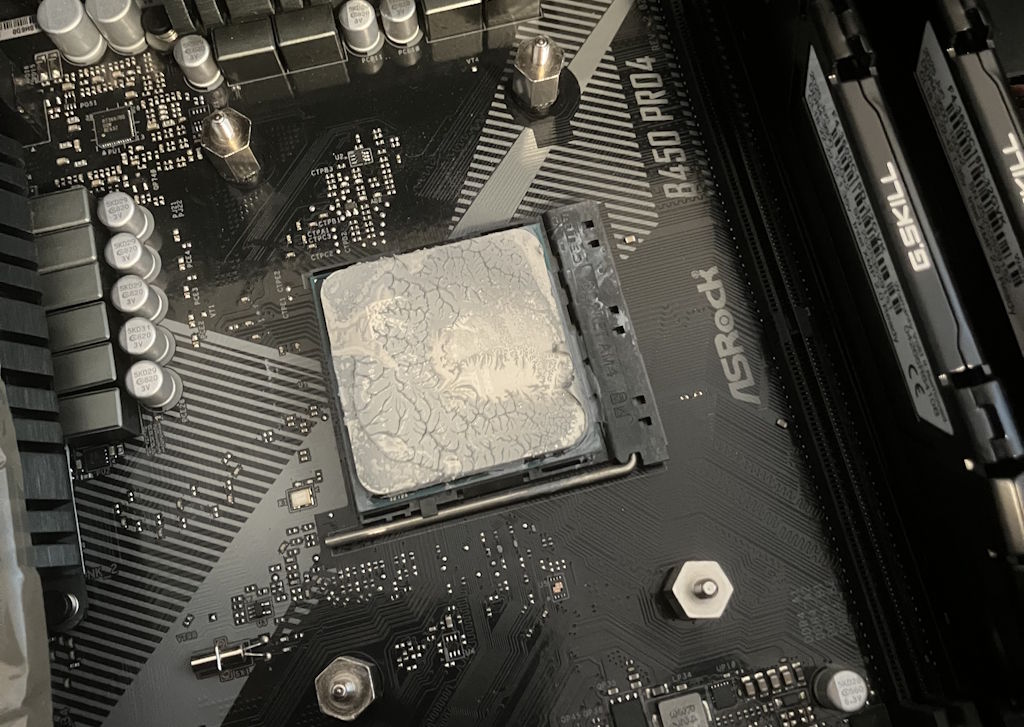
Of course, I'm slightly exaggerating here, since even if you do use a bit too much thermal paste and it gets squeezed out from the sides, it's just a matter of a few minutes of wiping and it's all clean. Plus, since the thermal compounds we use are typically not conductive, there isn't really that much to worry about. On some level, I could even say that the surface of the IHS being covered just means that the maximum surface area is available for heat transfer, but realistically people only care about the hotspot and the surrounding area, so that'd be a silly thing to say.
To heck with it, I paid for the whole tube, I'm going to use the whole tube. /jokes
I will say that I did just use some TP for wiping it down, which you technically shouldn't do because of lint, but I didn't feel like making a mess of a microfiber cloth (I need those for my glasses), alongside not really having any alcohol around the place, so I did need a bit more work and patience. But look, the end result was still pretty decent, even if not perfect and it took a few minutes to get it cleaned up:
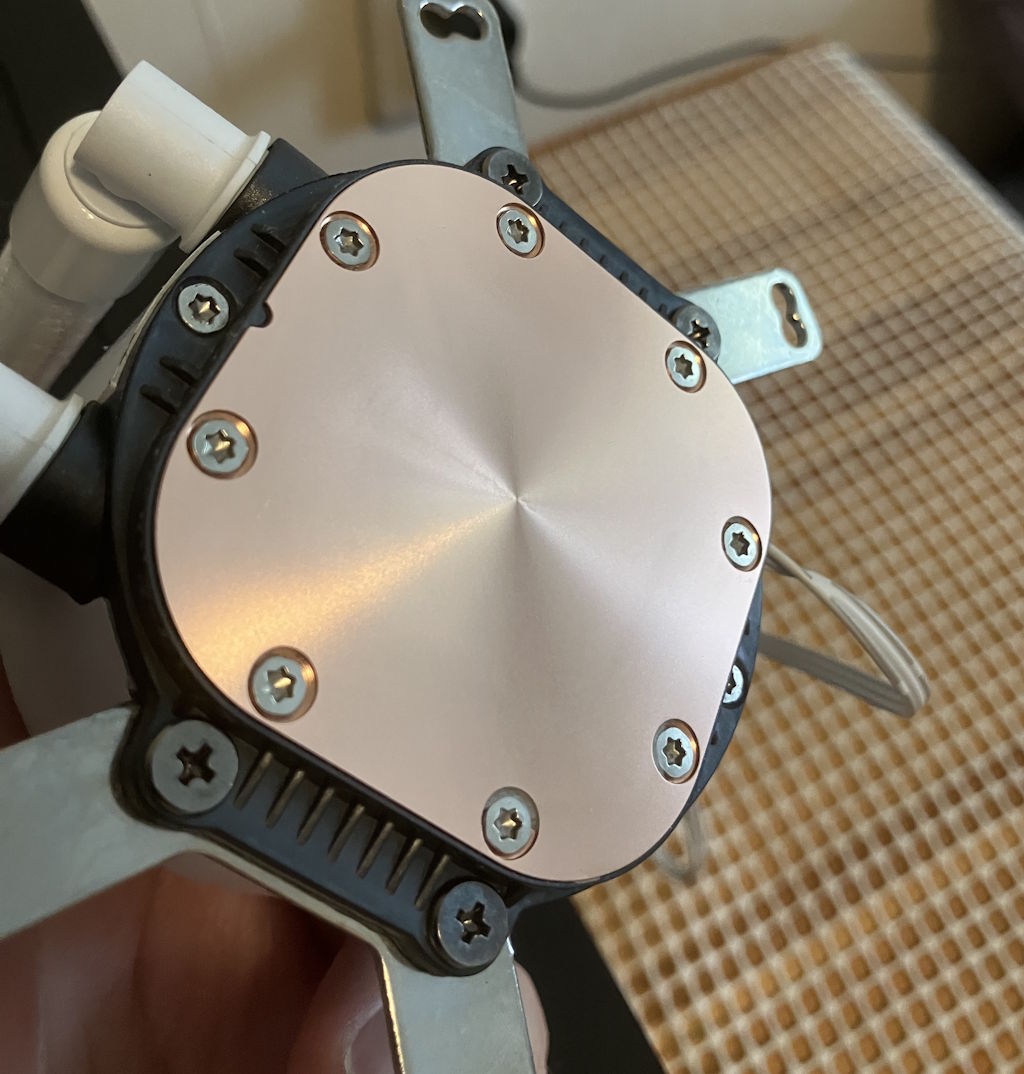
The new thermal paste
Now, what's the old thermal paste I wanted to replace and what with?
Previously, I didn't pay it much mind, thinking that most of them should perform in the same ballpark, so the old one was from Gembird - it was dirt cheap and actually had worked pretty nicely on 65 W CPUs previously, but seemingly wasn't quite up to the job when paired with a 105 W CPU, alongside being advertised for heatsinks, which is kind of the right thing, but perhaps not the least confusing wording to put on the package:
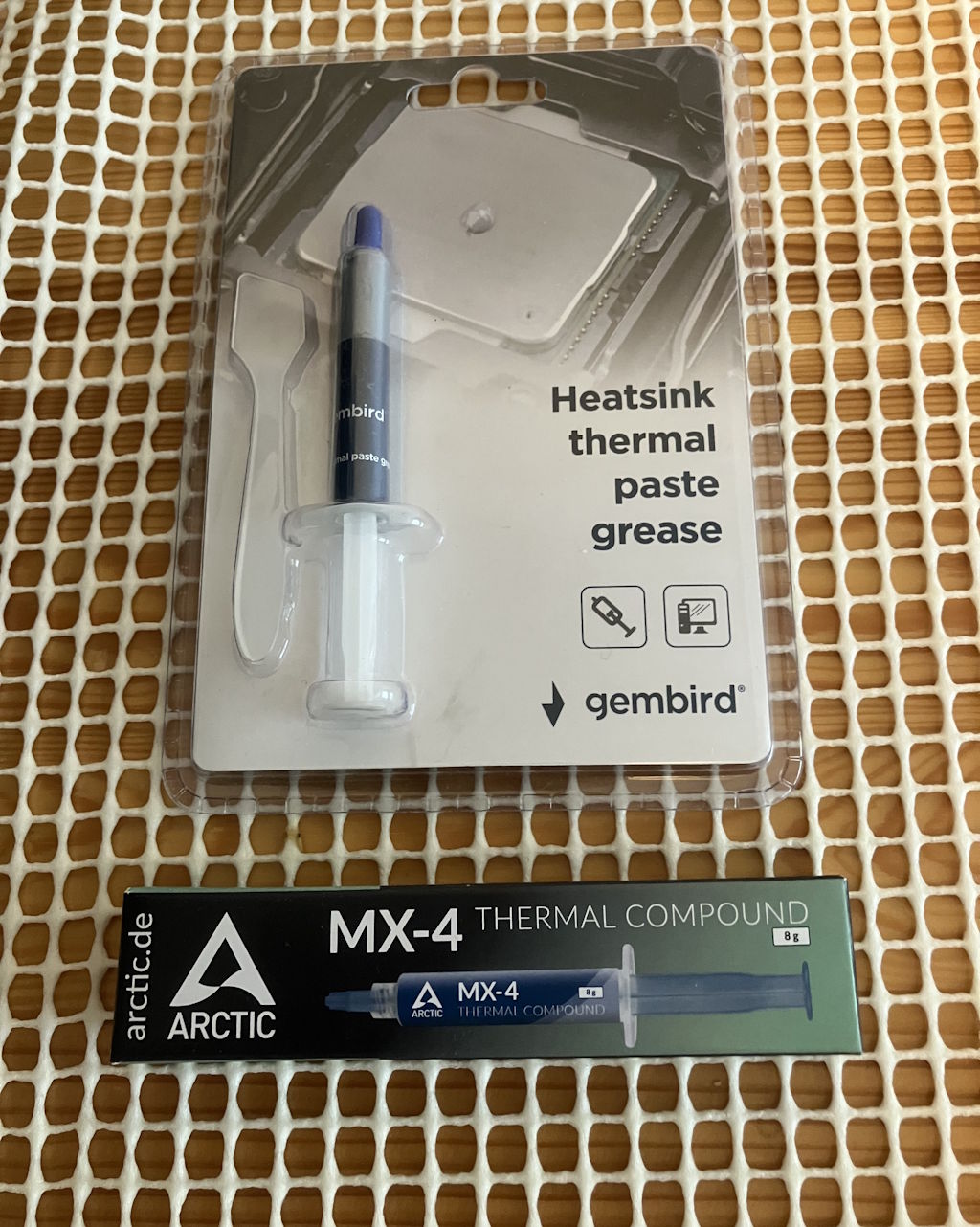
While the nondescript name might raise a few eyebrows, I assure you, it worked mostly fine.
And the replacement, as you can see is the good old Arctic MX-4, something that's been around for ages and is pretty well regarded by pretty much everyone: still an option that won't break the bank and is generally proven to work pretty well. I also opted for the 8 gram package, because if you seal it up properly, it's not like they have a short shelf life or anything.
Literally my only critique is that they didn't give me that little applicator spatula thing to make it easier to spread it on the CPU, which I stole from the Gembird kit instead:
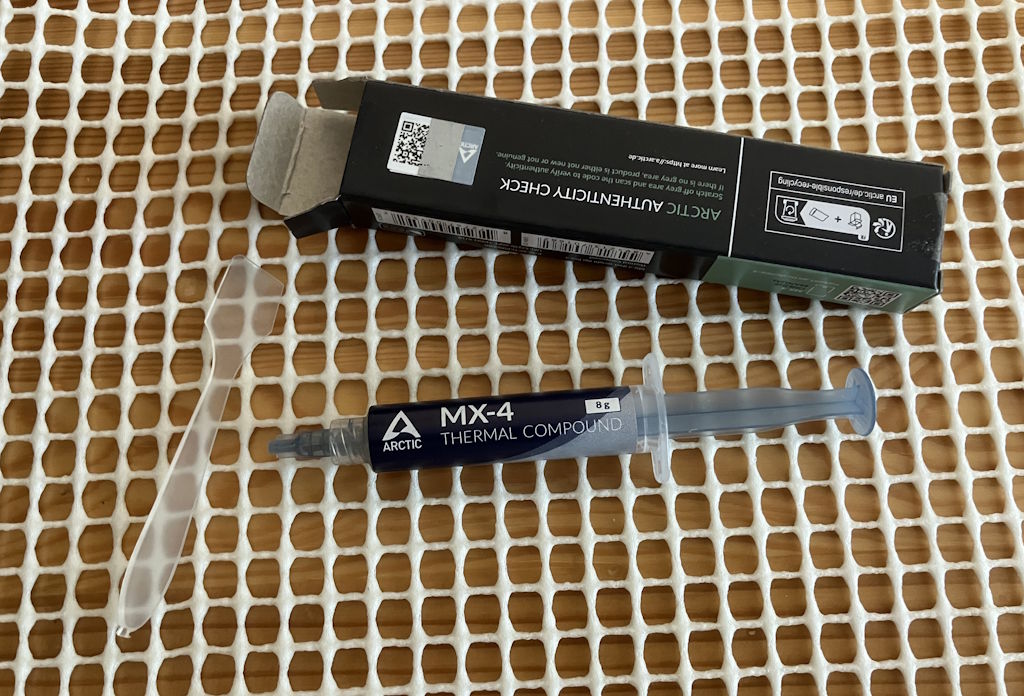
I did use a bit less this time around, you're just going to have to trust me on this one, because I was so focused on getting equal mounting pressure when putting the cooler back on, I totally forgot that I should have taken a picture beforehand.
As an aside, personally I think Intel had a really good mounting mechanism on their stock coolers, those four latches that rotate, but I guess screws give you the ability to apply a bit more mounting pressure when you really need it.
They did make me a little bit squeamish, because I have accidentally destroyed motherboards with my bare hands before - after a really stubborn 24-pin ATX connector latch made me bend the motherboard while just trying to disconnect it. That's honestly why I sometimes cut those latches off with pliers, because normally there is enough friction between all of the pins to lead to a tight fit anyways (of course, it depends on the individual PSU and motherboard and the manufacturing tolerances).
At the same time, I don't mount and unmount the AIO that often, so I did put a little bit of strength into screwing the AIO down, but not to the point where it'd get risky or anything. All of it, including cleaning the old thermal paste off, which was the most annoying part, took me maybe 15 minutes. Plus, not a single scrape on my fingers, no annoyances about mounting mechanisms.
If you don't have a custom water cooling loop already or an Intel stock cooler or something similarly easy to install and just unobstructive, you probably should get an AIO. It can also replace a few case fans, which I think is just lovely.
Now, what about the thermal paste, did it matter in the grand scheme of things?
How much does thermal paste matter?
Surprisingly, it doesn't seem like the Arctic MX-4 is that much better than the cheap Gembird thermal paste. There is a bit of a burn in period of sorts until it cures fully, but those differences usually are around a few degrees, so seeing CPU-Z stress tests settle on around the same 80ish degrees as before was a bit surprising:
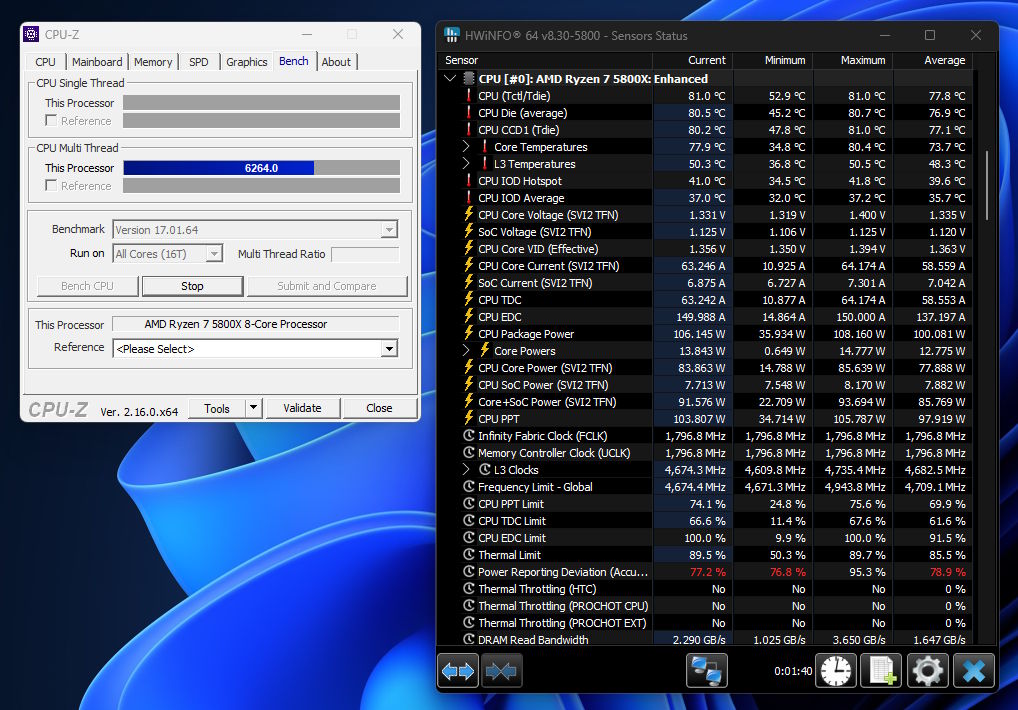
There might be a difference between the thermal pastes, but if it's there, it will probably be below 3-5 degrees C in most cases. I won't say that this is super disappointing or anything, actually a bit of the opposite - it's kind of cool that the more generic brand is good enough and can put up a fight even against more established brands.
It does make me want to experiment with a thermal pad instead of paste between the CPU and the cold plate, but I've been advised that it'd generally be not a very good idea, because pads generally struggle a bit more with heat transfer, which would be perfectly fine for a laptop or my 35 W homelab server CPUs (that are also AM4 ones, but passively cooled with a radiator and no fan, which is nice in its own way, because it's suddenly less noise coming from those two boxes), but might not be something I want to try on my main PC in the near future.
Doubly so, because Prime95 still very much brings the system to its knees and it starts to thermal throttle:
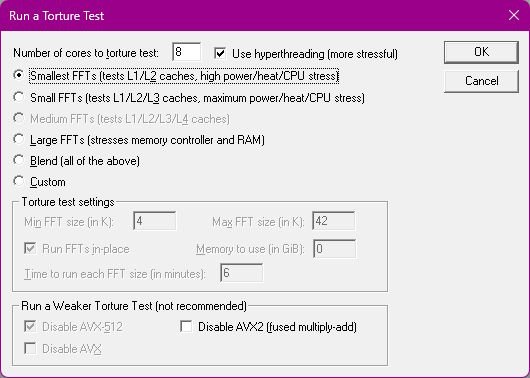
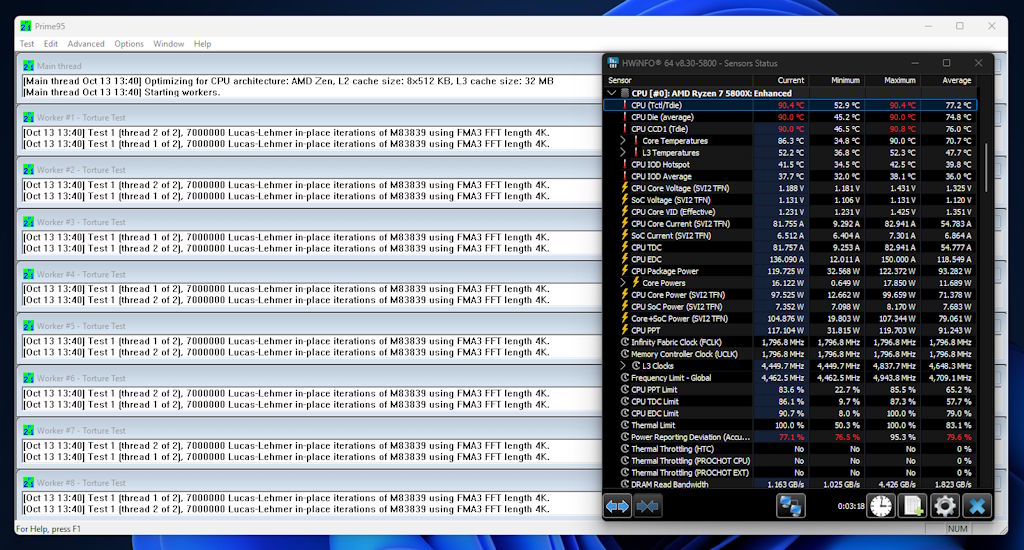
Yeah, it hits 90 C and has to throttle back to prevent damage. Not great to see, but also way better than the chip just frying itself or something, so I'll take that. The good part here is the fact that if everything works correctly, you won't really have any shutdowns or weird instability - just the CPU acting like a fully loaded piece of hardware, which it is at that point.
Now, you might be thinking about why the system is running so hot. Did I apply the paste wrong, or maybe the AIO isn't too good? The answer there is that all of the parts involved are generally pretty decent, it's just that I'm pushing the system a bit harder in an effort to make it last until 2030 (unless I fry it). I want to settle on getting pretty close to the maximum amount of juice that I can get for the squeeze and leave it like that. Pushed harder than stock, yes, but only to such a degree where it's stable.
Instead of 4.7 GHz the CPU boosts to around 4.9 GHz, I even tried letting it do 5 GHz for a bit and while generally it was fine, I did run into some stability issues in specific games instead of stress tests, oddly enough. It might have been related to the RAM timings which weren't exactly like the manufacturer would like before I got the 3600 MHz sticks and set it up properly, but in general 4.9 GHz is fine and those frequencies should be maintainable under workloads like games that only need some cores to do things quickly, especially because at this point I'm doing negative per-core curve optimizer (CO) offsets:
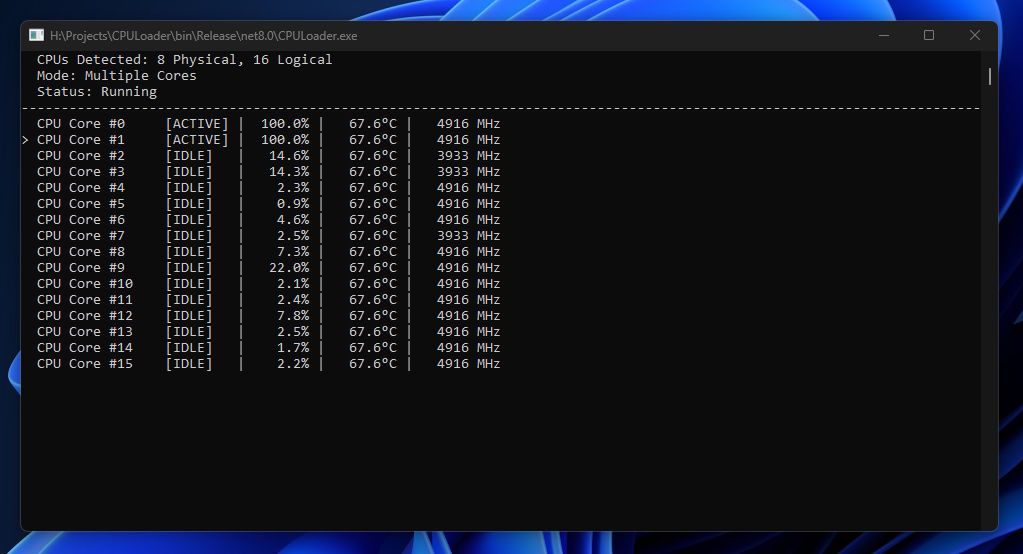
As you can see, PBO2 changes the clock rates as necessary and the cores that need the power get priority and can maintain pretty high speeds, which is pretty much what you want for games, because they'll rarely load all of the cores, but executing code on a few cores as quickly as possible is highly beneficial.
The good news here is that I haven't really found a real workload that stresses the system as much as the Prime95 did, either - because both gaming, video encoding and most other stuff I do on the system don't really make it go past 85 C even under full load. In general, higher temps might lead to some CPU degradation over years of constant usage, but it's nothing on the level of the voltage issue that was killing the 13th and 14th gen Intel CPUs. Rather, a few years down the line, maybe it won't be able to hold the higher clock speeds super well, but that's not a super big deal.
Summary
Looking at the results above, sadly I don't think I'll ever do 4.9 GHz sustained, but oh well, you win some, you lose some. I actually used some of the advice in this guide for my overclock, though it was a pretty aggressive setup on their end. Even my setup is probably going well into the diminishing returns and risking turning the CPU into a little space heater.
After a bit of trial and error, I'm overall pretty satisfied with the current setup. But also, AIOs are great, you should at least consider getting one, especially now that the prices are pretty reasonable (at least for the models coming out now, not sure what's going on with AliExpress).
It was a bit surprising how the thermal pastes performed pretty close to one another, but this also does match what I've seen in some videos online, like this one by JayzTwoCents: Does what Thermal Paste you use, REALLY matter?
Realistically, I'm probably holding on to that unopened package of the Gembird thermal grease as well, there's nothing wrong with it. As long as the mounting pressure is okay and there isn't too little on (or too much, if you don't like cleaning it up later), it will be fine.
At the same time, major props to Arctic for being pretty upfront in their marketing about their products. That sort of integrity is nice to see, instead of them just slapping some high imaginary number on the box.
Other posts: « Next Previous »